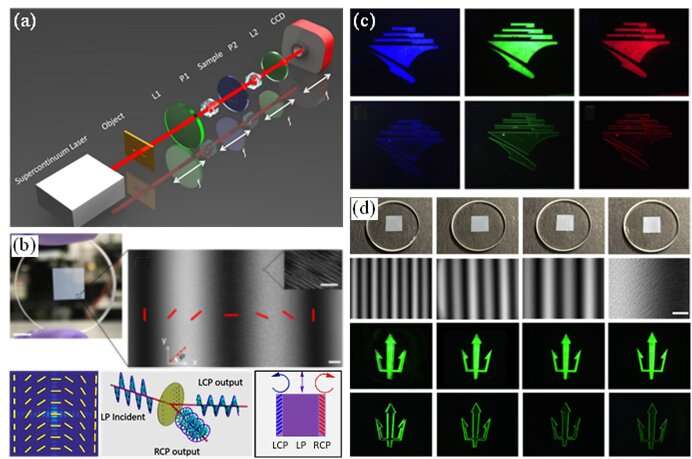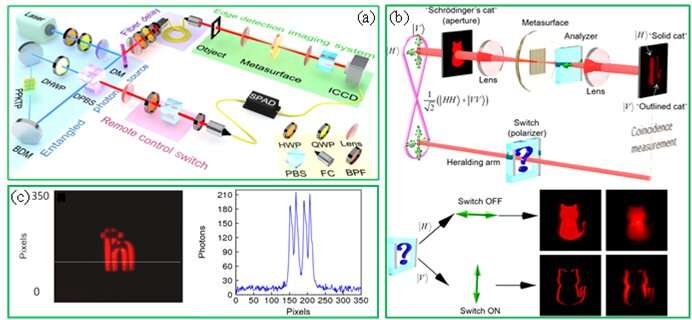Photonic spin Hall effect: Fundamentals and emergent applications

When a beam is reflected (or refracted) at optical interface or propagating through an inhomogeneous medium, photons with opposite spin angular momenta will separate with each other, resulting in a spin-dependent splitting of light, and this phenomenon is called the photonic spin Hall effect (SHE). The photonic SHE is a fundamental physical effect that originates from the spin-orbit interaction of light. It can be regarded as an analog of the spin Hall effect in electronic systems: the right-handed and left-handed circular polarization components of light play the role of spin-up and spin-down electrons, respectively, and the refractive index gradient plays the role of the potential gradient. The unique physical properties of photonic SHE and its powerful ability to manipulate photons have made it a hot spot in modern optics, with wide application prospects in precise metrology, analog optical processing, quantum imaging, and microscopy imaging. Recently, the research group of Professors Hailu Luo/ Shuangchun Wen from Hunan University in China has been invited to review the fundamentals and emergent applications of photonic SHE. From the perspective of spin-orbit interaction underpinned by geometric phases, they described the fundamental concepts and recent advances of photonic SHE systematically, and highlighted its important applications in physical parameter measurement, analog optical computing, and all-optical image edge detection.
The research group of Professors Hailu Luo/ Shuangchun Wen has been engaged in spin photonics for years. It is one of the earliest teams in the world to carry out the precision metrology of physical parameter and the analog optical computing based on the photonic SHE.
Precision metrology of physical parameters
The photonic SHE is a weak effect that produces spin-dependent shifts usually only of the order of subwavelength. The weak value amplification mechanism of quantum weak measurements provides a feasible way to amplify and measure this small shift precisely. Meanwhile, due to the high sensitivity of the photonic SHE to optical coefficients, it can be used as a probe of weak measurement system for the precision metrology of physical parameters. The corresponding measurement accuracy, can be improved by two orders of magnitude higher than the conventional methods in existing experimental measurements of two-dimensional atomic crystals, such as determining the conductivity of graphene [Fig. 1(a)] and examining the optical model of graphene [Fig. 1(b)]. Moreover, the spin Hall shift is closely related to the optical activity of chemical solutions or biomolecules, so it can also be adopted as a precise tool to develop ultra-sensitive sensing applications.
-

Fig. 2 Broadband image edge detection based on the photonic SHE in dielectric metasurfaces. (a) Experimental setup; (b) Sample of metasurfaces and illustration of edge detection; (c) Results of broadband image edge detection at different illumination wavelengths; (d) Results of image edge detection using metasurfaces with different periods. Credit: Compuscript Ltd -

Fig. 3 Quantum switchable edge detection based on the photonic SHE in dielectric metasurfaces. (a) Experimental setup; (b) The first row is the illustration of coincidence measurement, and the second row shows the schematic of controlling the mode of quantum edge detection; (c) The edge detection image exhibits a high signal-to-noise ratio. Credit: Compuscript Ltd
Analog optical computing and image edge detection
The analog optical computing takes light as the carrier to realize information processing by using the change of photons in beam propagation, which has intrinsic parallel nature for high-speed and large-scale operation and thus shows superior integration capability compared with the traditional digital processes. Optical edge detection, an important application branch of analog optical computing, retints important geometric features by reducing the amount of data to be processed and extracting meaningful information in the image. Based on the photonic SHE at computing metasurfaces, multifunctional broadband image edge detection with adjustable resolution can be realized after first-order spatial differentiation (Fig. 2).
In addition to classical light sources, the spin-orbit interaction of quantum light sources also plays an important role in image edge detection. As shown in Fig. 3, different imaging results can be obtained by remotely switching the polarization state of the photons (used for triggering) in the entangled photon pair, thus enabling the remote switching of imaging in both regular and edge detection modes. Compared with the detection in classical optics, the quantum edge detection and image processing based on entangled photons exhibits higher noise-signal ratio at the same photon flux level. The development of analog optical computing based on the photonic SHE to realize all-optical image processing, also possesses important application prospects in microscopy imaging, quantum imaging, artificial intelligence, etc.
The research on the photonic SHE provides a unique degree of freedom on the manipulation of photons, to drive the development of spin Hall devices, even can promote the formation of an emergent discipline called spin-photonics.
More information: Shuoqing Liu et al, Photonic spin Hall effect: fundamentals and emergent applications, Opto-Electronic Science (2022). DOI: 10.29026/oes.2022.220007
Provided by Compuscript Ltd





















